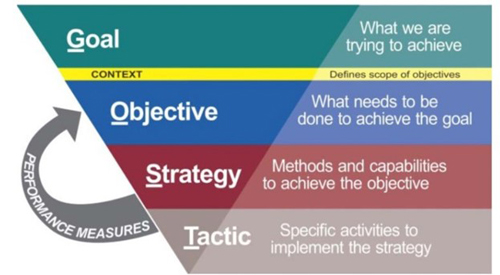There is a common misconception that the sensors located at traffic signals, such as video cameras, loop detectors in the pavement and/or radar/microwave sensors, cause the traffic signals to adapt to changing traffic conditions. In reality, this is not always the case. There is a difference between pretimed traffic signals, actuated traffic signals, and adaptive traffic signals.
Pretimed traffic signals don’t use any vehicle or pedestrian detection, and every movement gets served for a fixed amount of time. This type of operations is common for central business districts or areas with a lot of pedestrians. Actuated traffic signals use detection for vehicles and pedestrians and serve minor movements only when there is demand and can shorten the movement duration if the demand drops to zero while it is being served. Adaptive traffic signals use detection data and special algorithms to adjust signal timing parameters in real-time or semi real-time for different conditions.
Not all traffic signals are coordinated to other traffic signals. Some traffic signals operate solely based on demand at the intersection, but these traffic signals are most likely not close to other traffic signals, or the demand fluctuates so much that coordination is not possible. Coordinated traffic signals allow the traffic signals to operate as a group, in which there are synchronized movements that are progressed through a series of intersections without stopping.
Most of the traffic signals in the United States operate on a time-of-day sequence, meaning that predetermined timing plans go into effect during certain times of the day. An example is creating an AM Peak timing plan (6 – 9 a.m.), MID Peak timing plan (9 a.m. – 3 p.m., 7 p.m. – 9 p.m.), and PM Peak timing plan (3 – 7 p.m.) and uncoordinated timing plan (Midnight – 6 a.m., 9 p.m. – Midnight) for the weekdays. The sensors located at a traffic signal do make the intersection smarter, because minor movements that don’t have any demand can get skipped and some unused time can move to the next movement. However, there are a lot of limitations in the existing methodologies that don’t cause the traffic signal to truly adapt, so this is not called adaptive traffic signal control.
One form of advanced traffic signal operations between time-of-day sequences and adaptive traffic signal control is traffic responsive control, where the same predetermined plans in a time-of-day sequence are used, but are selected based on traffic conditions. Special detectors in the field feed a customized traffic responsive algorithm to select one of the predetermined timing plans. The benefits of this type of application are for holidays or areas where the peak period durations can fluctuate. For example, if Independence Day falls during the week, the detectors will sense the lower volumes and may not run the AM Peak timing plan or PM Peak timing plan, or for a much smaller duration if it does, thus reducing the cycle length and delay.
Unlike time-of-day sequences or traffic responsive control, which use the predetermined signal timing plans, adaptive traffic signal systems can adjust all coordination parameters, within certain constraints imposed by an agency, based on what the traffic requires. As time goes on, traffic evolves (it can be quickly in minutes or slowly in days, months or years), and variability is created in which adaptive traffic signal algorithms can handle the variability up to the point of oversaturation (a traffic condition in which the demand exceeds the capacity of the intersection without adding more lanes of travel).
In other countries, or regions outside the United States, there is more use of adaptive traffic signal systems, which is shown in Table 1 (Source: NCHRP Synthesis 403 – Adaptive Traffic Control Systems: Domestic and Foreign).
If adaptive traffic signal systems are popular in other areas of the world and handle traffic variations better than traditional traffic signal operations, why are they not used much in the United States?

The answer to that question is focused on some key elements, including, systems engineering, funding, control over the system and perception of a “set it and forget it” mentality. The funding element is embedded in the other three elements and adaptive traffic signal systems do have a higher cost up front; however, during evaluation, the key areas where adaptive traffic signals provide a bigger benefit are often not studied. Adaptive traffic signal systems provide much benefit when traffic fluctuates the most, like special events, incidents, holidays or business centers like shopping malls. It is hard for studies to be kept open for a longer period of time to study these types of traffic fluctuations because they don’t happen as often and there has to be a good apples to apples comparison, meaning the events have to be similar.
Systems Engineering
There is a great need to go through the Systems Engineering process when selecting an adaptive traffic signal system, which is a costly and time-consuming process. Analyzing the data, getting to really understand the corridors and applying the G-COST (goals, context, objectives, strategies and tactics) methodology will better meet expectations of the adaptive traffic signal system (see Figure 1).

The goal is the broad statement that describes the desired outcome or the “what” the agency is trying to achieve. The goal addresses different areas of the traffic signal system and can include: reliability, efficiency, quality of transit service, preservation, safety, etc. The context defines the types of objectives that are appropriate for the traffic signal system. An example is “efficiency,” which can be applied to almost all areas of government, including transportation, libraries, parks, etc. By restricting the context to objectives related to different traffic signal system topics, it prevents the analysis from growing into an unmanageable task.
The objective is more specific than the goal and can be measurable. It defines the “what” the agency needs to do in order to accomplish the goal. It should include at least one performance measure to validate the achievement of the result. A strategy is guidance put in place to achieve an objective. An example could be to operate traffic signals to accommodate all modes of transportation. The tactic is the specific method to implement a strategy. It is usually the action or tool used to implement the strategy to achieve the objective to attain the goal. An example of a tactic to the strategy of operating traffic signals to accommodate all modes of transportation could be to use simulation software to coordinate for bicycle progression.
It is important not to have a predetermined adaptive traffic signal system in mind when going through this process because achieving good mobility means recognizing the interactions between different stakeholders and the policies and procedures that are part of each stakeholder. If the main objective is equitable distribution of green time, but the adaptive traffic signal system is programmed or geared towards smooth flow, then the adaptive traffic signal system is set up for failure at the start.
- Equitable Distribution of Green Time – This objective is to equitably serve all traffic movements and modes at each intersection. Coordination is provided along the mainline, but not at the expense of side street, left turn, pedestrian, bicycle and transit traffic.
- Smooth Flow – This objective is more geared towards a primary arterial road, in one or both directions, where a big green band is used to keep a platoon that has started moving together and rarely stop at intersections. This may involve holding a platoon at a larger intersection with heavier side street traffic until it can be released and not experience any downstream stops. It may also involve holding the side street at a higher degree of saturation or providing only enough green time to serve queued traffic demand. This allows the mainline to flow more “smoothly” and allows for less split failures for mainline left turns, which will prevent any backup to the mainline through direction and prevent the slowing down of the through vehicles.
Control Over the Adaptive Traffic Signal System
There are multiple different adaptive traffic signal systems available on the market. Certain adaptive systems can “adapt” more than others. If an adaptive traffic signal system needs to fit within existing controller coordination technology, there are inherent limitations like transition. Transition is the process of either entering into a coordinated timing plan from uncoordinated operations or changing between two different coordinated timing plans. It is required because not all coordinated timing plans operate with the same patterns and cycle lengths. Transition is not a friend of adaptive traffic signal systems, which makes for slower adaptive abilities, but the adaptive methodology does utilize methodologies that are known to traffic signal engineers and allow for more control over the adaptive traffic signal system. The adaptive traffic signal systems that can “adapt” more tend to be “black box” solutions, which means more proprietary algorithms and producing results without revealing any information about the internal workings. When the traffic community can find out the tolerance for control and accept what comes with it, then we will be happier with the adaptive traffic signal system chosen.
Adaptive Traffic Signal Systems Are Not “Set and Forget”
There is the “set and forget” mentality when it comes to adaptive traffic signal systems; however, goals and objectives will change over time and then the adaptive traffic signal system priorities need to change with it. For example, if the land use changes dramatically or new big traffic generators are built, the chances are the adaptive traffic signal system will need modification to the parameters because the goals and objectives may have to be changed. If the agency has a new multi-modal priority, then the adaptive traffic signal system may need to be modified to more of an equitable distribution of green time objective. If an improvement project adds capacity to a corridor, then the objective may need to be changed from queue management to smooth flow or equitable distribution of green time objective. The extra maintenance doesn’t mean the benefit to cost ratio goes down dramatically, as the adaptive traffic signal system still provides great value between these maintenance steps. The more acceptance the traffic community has regarding the maintenance required and the extra benefits it provides, the happier we will be with the adaptive traffic signal system chosen.



